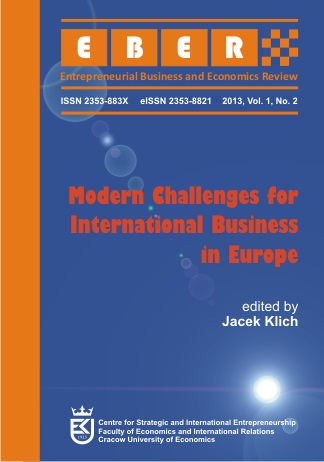Government Incentives and FDI inflow into R&D: The Case of Visegrad Countries
Government Incentives and FDI inflow into R&D: The Case of Visegrad Countries
Author(s): Magdalena OwczarczukSubject(s): Economy
Published by: Uniwersytet Ekonomiczny w Krakowie
Keywords: R&D;policy incentives; FDI; investment promotion agencies; V4
Summary/Abstract: The aim of this article is to identify and compare the efforts of the Visegrad countries in order to attract more foreign capital to the R&D sector. The study is based on the Eurostat’s and OECD’s data. Considerations about government incentives are based on information gathered by individual foreign investment promotion agencies. The countries included the study are the following: Czech Republic, Hungary, Slovakia and Poland. The countries of the Visegrad Group are perfect example of competition in attracting foreign investors. In these countries a dynamic growth of foreign participation in the financing of research and development, as well as a growing number of emerging international research centres has been observed. Among the many conditions that shape the investment environment and inflow of investment, the public R&D support is seen as a major factor. Inflows of foreign direct investment in research and development has increased substantially during the last years. In the recent years increased competition can be observed among different countries in attempt for providing attractive conditions for potential foreign investors in research and development (R&D) sector. The role of governmental policies is important to build an economic, institutional and business environment to attract foreign investors and their R&D activities. The analysis suggests that investment incentives introduced by Visegrad countries are not sufficient for FDI inflows to the R&D.
Journal: Entrepreneurial Business and Economics Review
- Issue Year: 1/2013
- Issue No: 2
- Page Range: 73-86
- Page Count: 13
- Language: English

